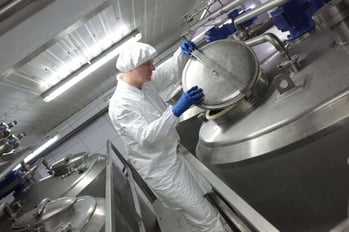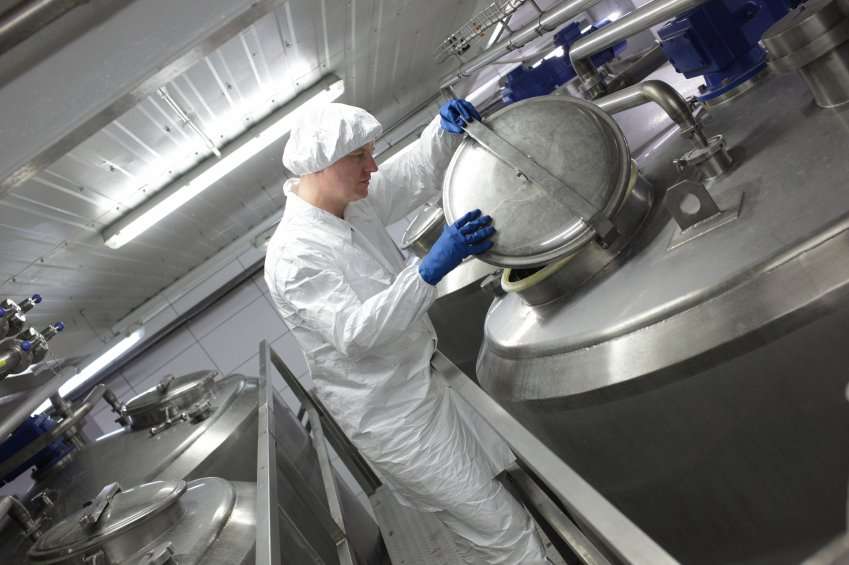Do You Need A Food Processing ERP?
From forecasting to financials, demand to distribution, and order to cash, dedicated food processing ERP solutions deliver all the functionality a food manufacturer would need to:
- integrate all resources and processes through one system;
- efficiently handle perishable products and track critical limits to chemical, biological, and physical hazards;
- keep ingredient, recipe, and formula variations within acceptable limits;
- monitor employees and equipment, and set up automatic alerts and corrective instructions to be emitted before or after critical limits are exceeded;
- synchronize demand with production in real time so that optimum inventory levels can be maintained even in fluctuating market conditions;
- measure, control, and minimize waste;
- manage a variety of operations, from simple tasks to procedural programs, such as HACCP;
- access different business areas remotely to make timely and effective decisions;
- improve sales, order, and inventory management to reduce operational costs and increase efficiency.
To offer food and beverage companies a cost-effective, organization-wide business solution, Microsoft developers and technicians have complemented their know-how in building reliable ERP systems with a deep understanding of food and beverage industry best practices. As a result, they’ve came up with Dynamics AX, a proven software solution currently serving hundreds of food and beverage processors worldwide.

Inherent flexibility, high-stability, scalability, and low maintenance costs are the characteristics that have placed Dynamics AX among the top ERP solutions for the food and beverage companies trying to minimize IT overhead, while reducing bottlenecks and downtime.
Key features for Food and Beverage include:
Production and Manufacturing
- multi-level formula-based recipes and unlimited Bill of Material (BOM) levels
- graphical representation of formulas and recipes based on quantities or percentages;
- raw material tracking back to origins;
- integrated co-product and by-product management along with product attribute analysis;
- integrated specification and quality monitoring;
- production tracking by multiple dimensions, including by item category, product line, plant, warehouse, site, region, etc.;
- flexible, accurate scheduling, yield planning, and inventory management using non-converted units of measurement (UOM);
- lot tracking and control management;
- shelf and expiration date management;
- as-produced weight (catch weight) for accurate inventory management, purchase order management, and cost control;
- master planning for made-to-order and made-to-stock;
- advanced automatic replenishment according to preset targets/tasks.
Inventory and Warehousing
- optimized picking based on First In, First Out (FIFO) or First Expired/First Out (FEFO);
- inventory monitoring and order tracking using dual UOM (e.g. total weight and units) and real-time updates on procurement, production, and capacity planning;
- quarantined product management;
- inventory statuses for all goods, including designations for QC testing and QC failed.
Finance and Accounting
- multi-dimensional accounting and deep financial controls (workflow approvals, financial journals, reporting, trial balance, etc.);
- production cost monitoring and analysis (cost breakdown per unit of finished goods, including material, manufacturing, and overhead costs);
- fixed asset integration with procurement and accounts payable;
- financial reporting by customer group, food category, and region;
- rebate and allowance management.
Interfaces
- Point of Sale (POS) systems;
- Web portals for self-service.
In conclusion, Dynamics AX delivers a comprehensive food processing ERP solution that can help food and beverage companies meet industry standards and regulations, while addressing both their own internal requirements and customer needs. When necessary, Dynamics AX can be customized to provide niche- and company-specific functionality, such as tax maintenance programs, import/export shipping, etc. Dynamics AX can also be deployed via the cloud, on premise, or as a hybrid solution. Depending on the deployment model selected, users can benefit from superior scalability and customization, mobile capabilities, and straight-through application processing, being able to limit challenges in error-prone food and beverage processing environments with minimal IT involvement.
For more information on Dynamics AX and its capabilities, we invite you to download “New, Changed, and Deprecated Features for Microsoft Dynamics AX 2012.”
 Tips And Tricks To Selecting A Food Processing ERP">
Tips And Tricks To Selecting A Food Processing ERP">
